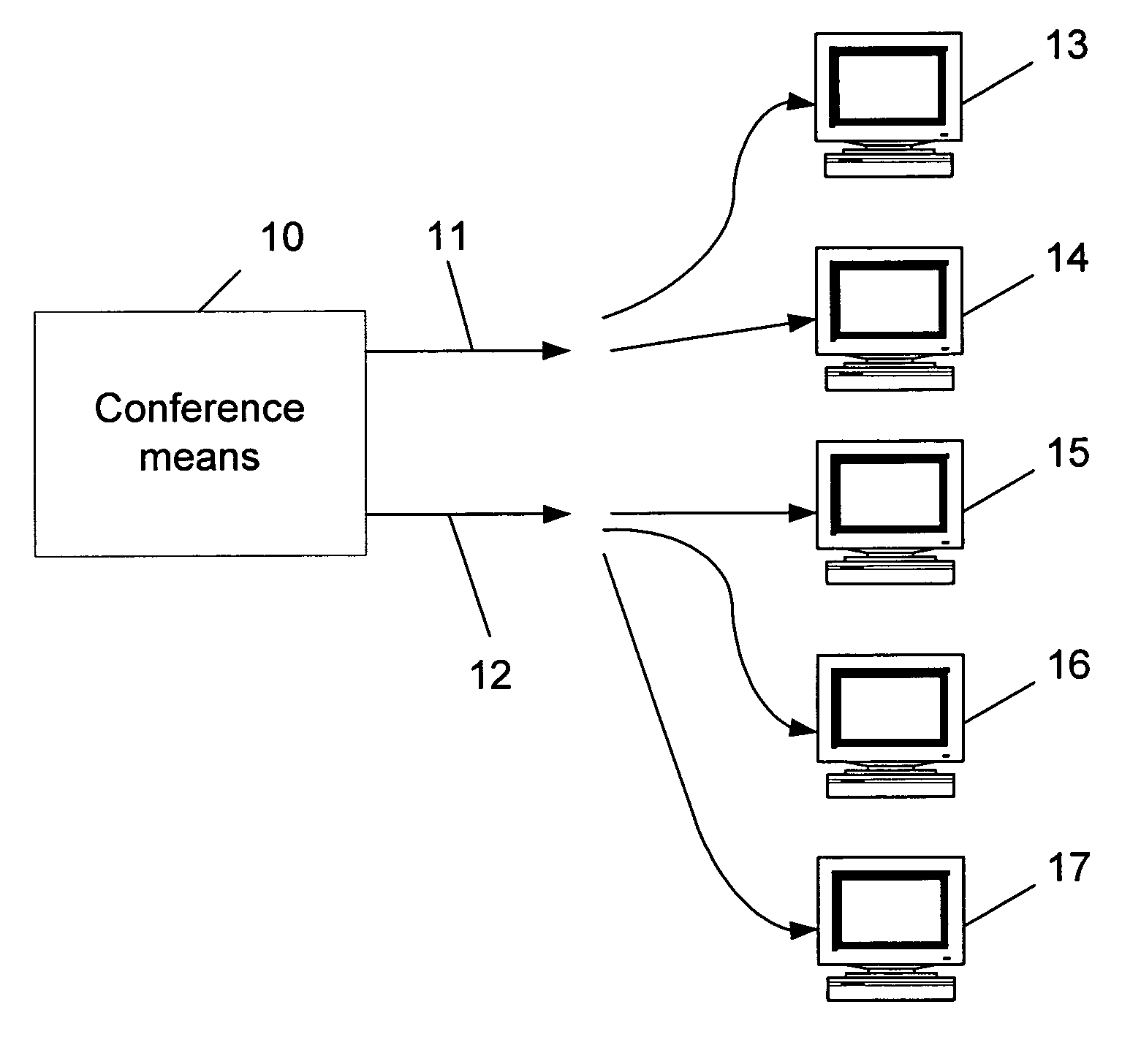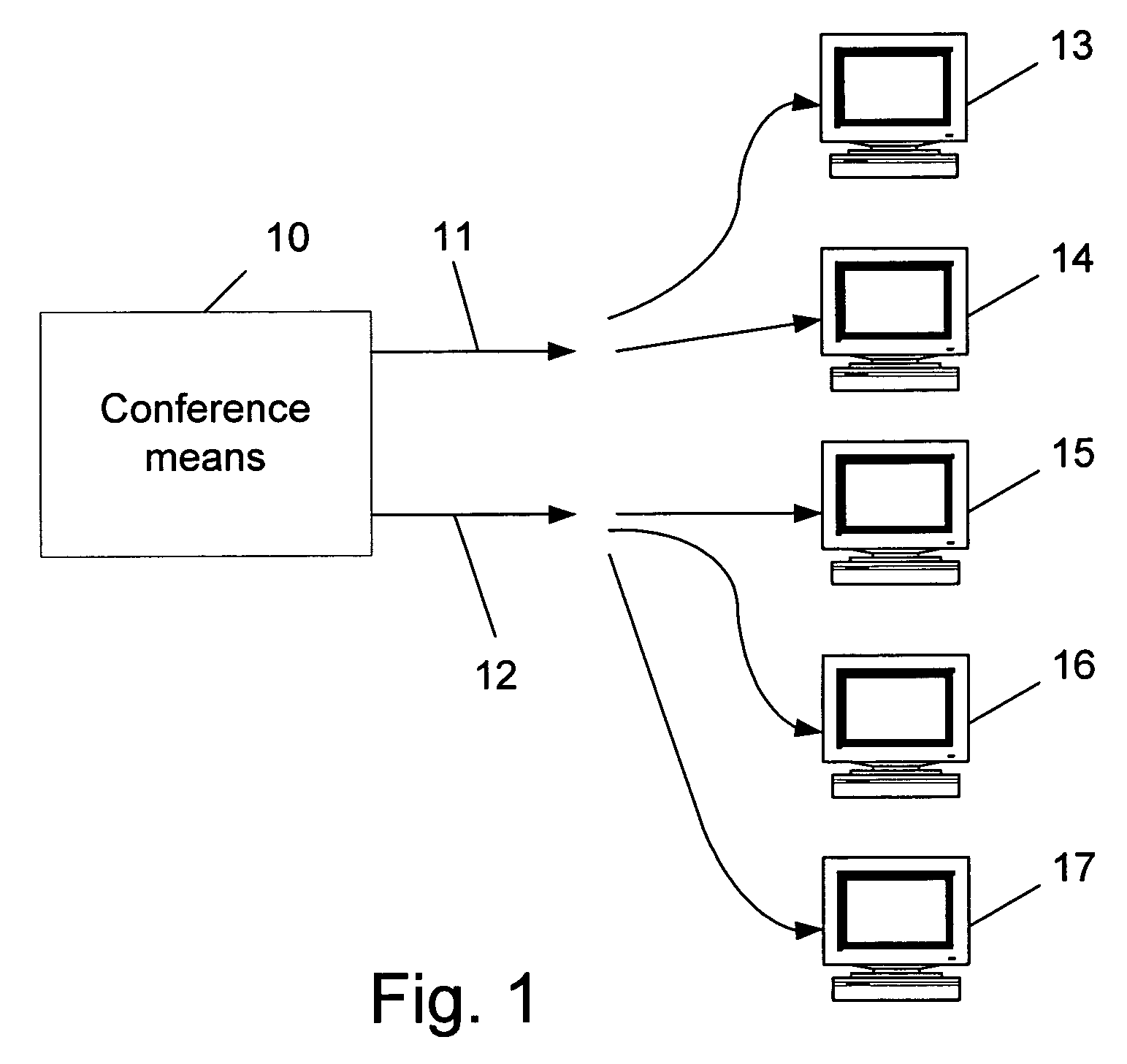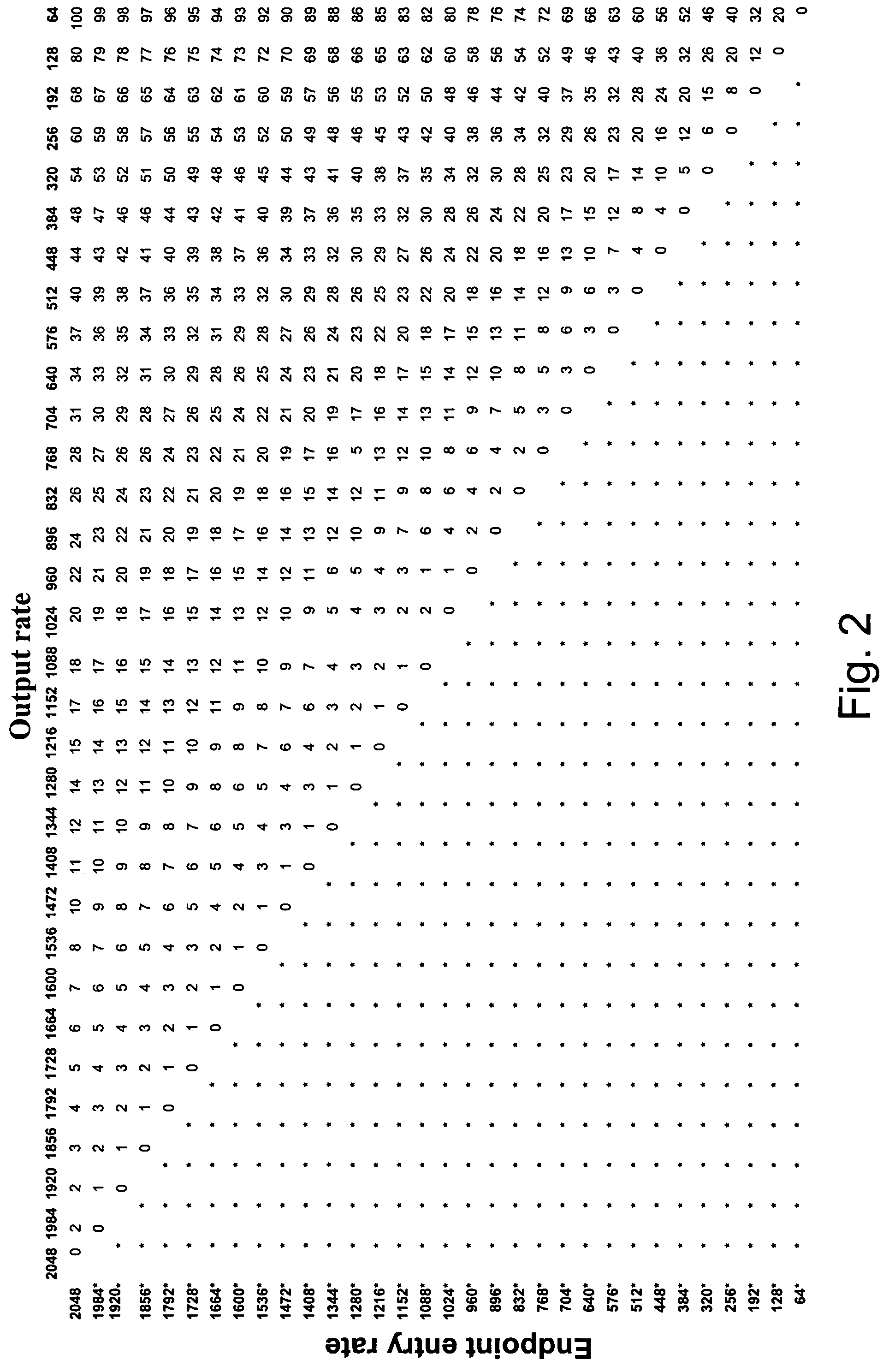Method for dynamically optimizing bandwidth allocation in variable bitrate (multi-rate) conferences
a bandwidth allocation and variable bitrate technology, applied in the field of videoconferences, can solve the problems of not optimizing for optimum quality, 128 kbps video which is obviously not optimal, and the overall quality experience of the participants in the conference is not optimal
- Summary
- Abstract
- Description
- Claims
- Application Information
AI Technical Summary
Benefits of technology
Problems solved by technology
Method used
Image
Examples
Embodiment Construction
[0025]The invention will now be described primarily with reference to examples of a video conference between two or more endpoints. These examples are provided merely to illustrate the invention and are not intended to limit its scope in any way. It should be understood that the invention can be applied mutatis mutandis to other methods in which different bandwidths are available to different joint users, such as streaming video over the Internet.
[0026]As stated, the invention relates to a method for dynamically selecting the optimal rates to use in a conference with three or more endpoints, wherein each endpoint may have a different video rate. The conference has the ability to provide media to the endpoints joining it, for at least two rates (i.e., multi-rate conference). In order to carry out such a conference it is required to provide suitable equipment or conference means, such as a server which includes a capability for transcoding media from one rate to at least one other. Fo...
PUM
 Login to View More
Login to View More Abstract
Description
Claims
Application Information
 Login to View More
Login to View More - R&D
- Intellectual Property
- Life Sciences
- Materials
- Tech Scout
- Unparalleled Data Quality
- Higher Quality Content
- 60% Fewer Hallucinations
Browse by: Latest US Patents, China's latest patents, Technical Efficacy Thesaurus, Application Domain, Technology Topic, Popular Technical Reports.
© 2025 PatSnap. All rights reserved.Legal|Privacy policy|Modern Slavery Act Transparency Statement|Sitemap|About US| Contact US: help@patsnap.com



